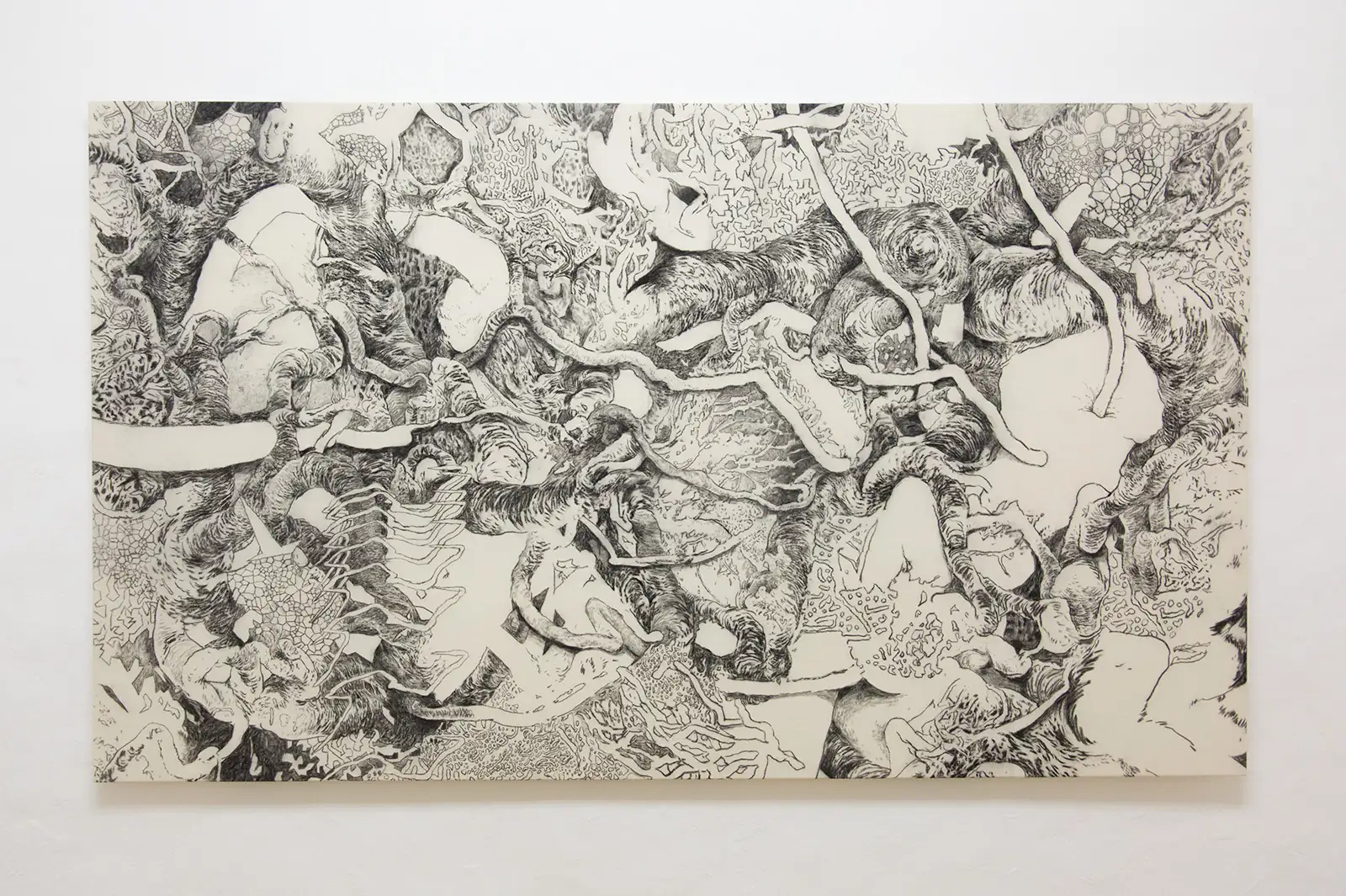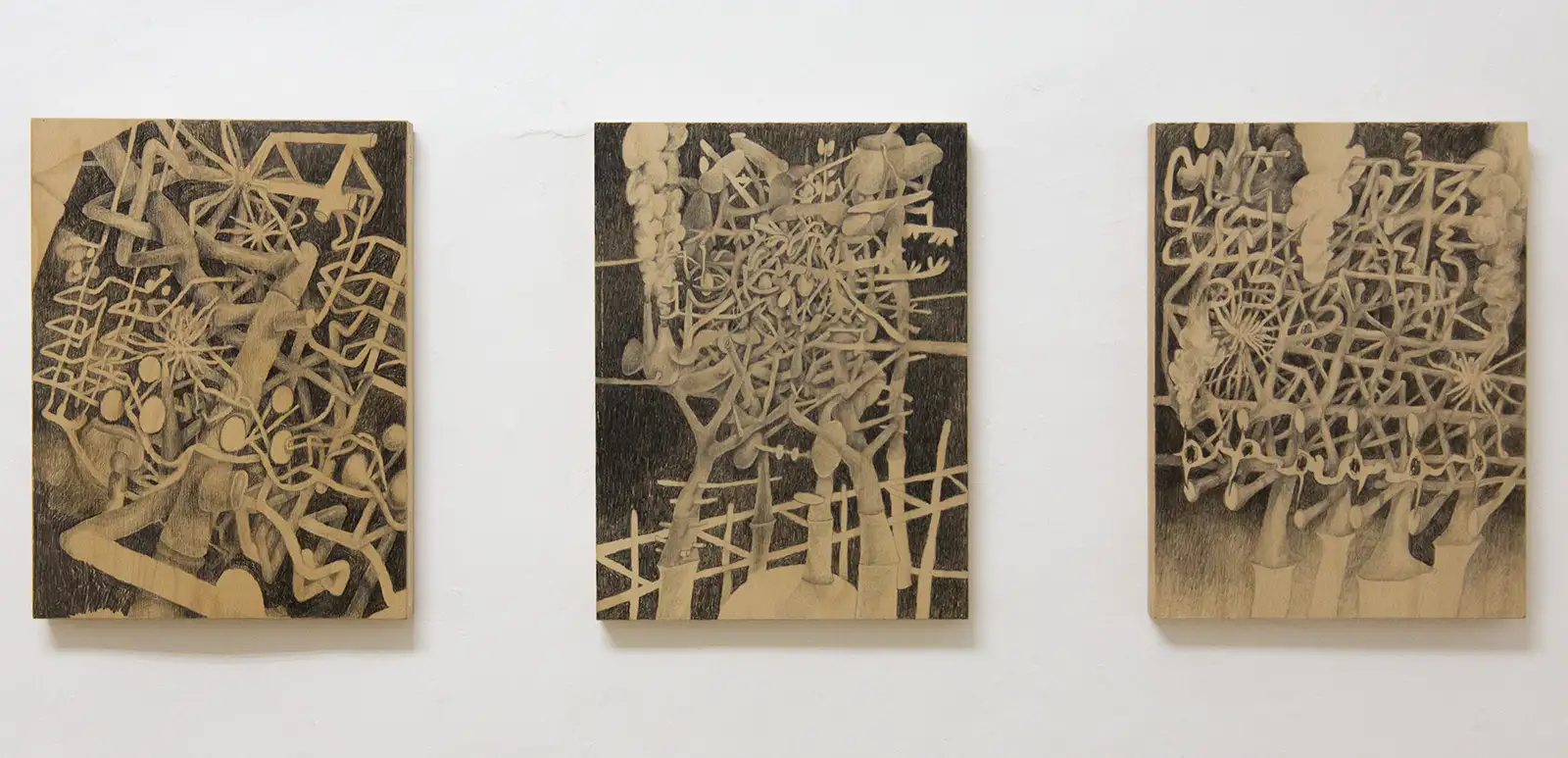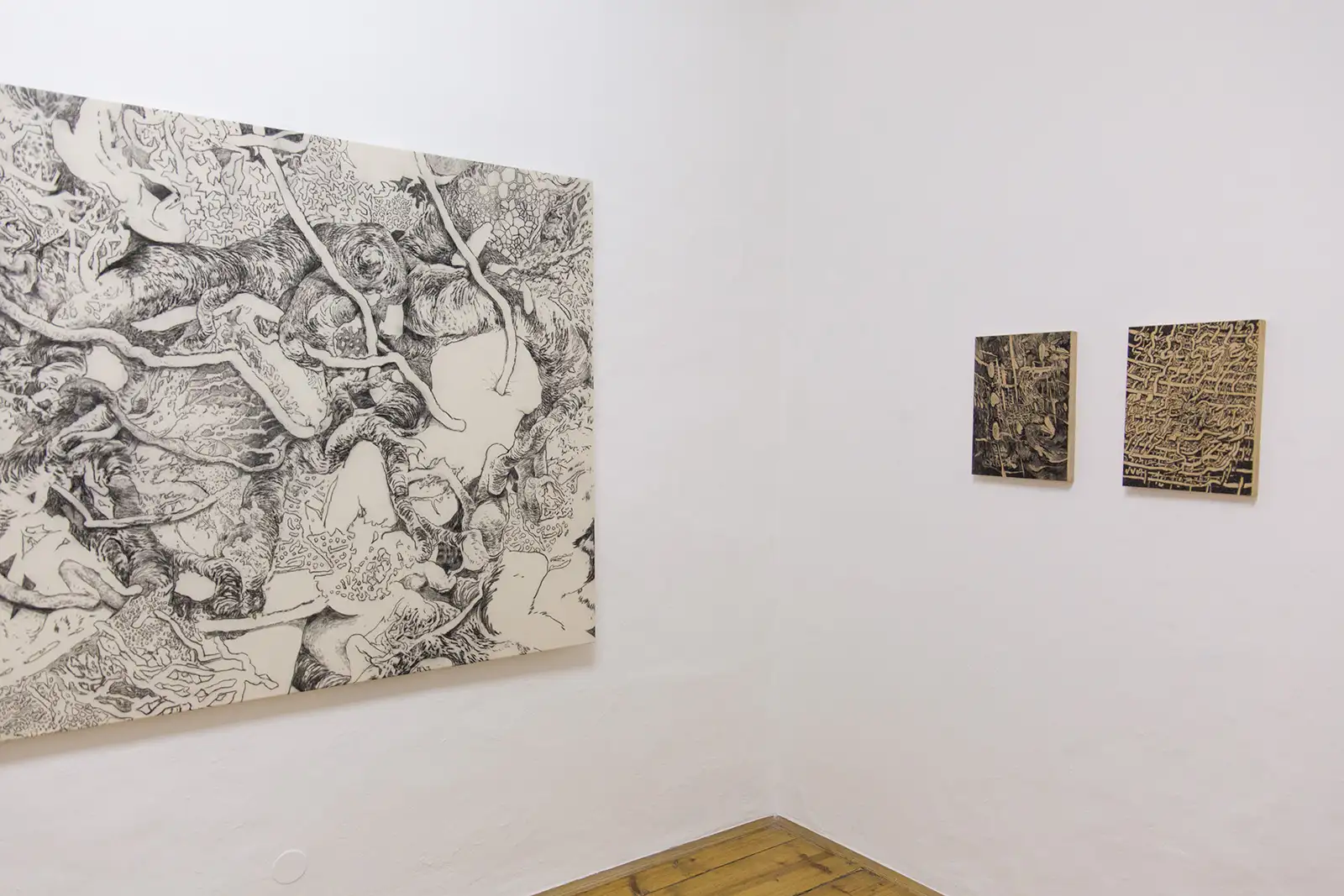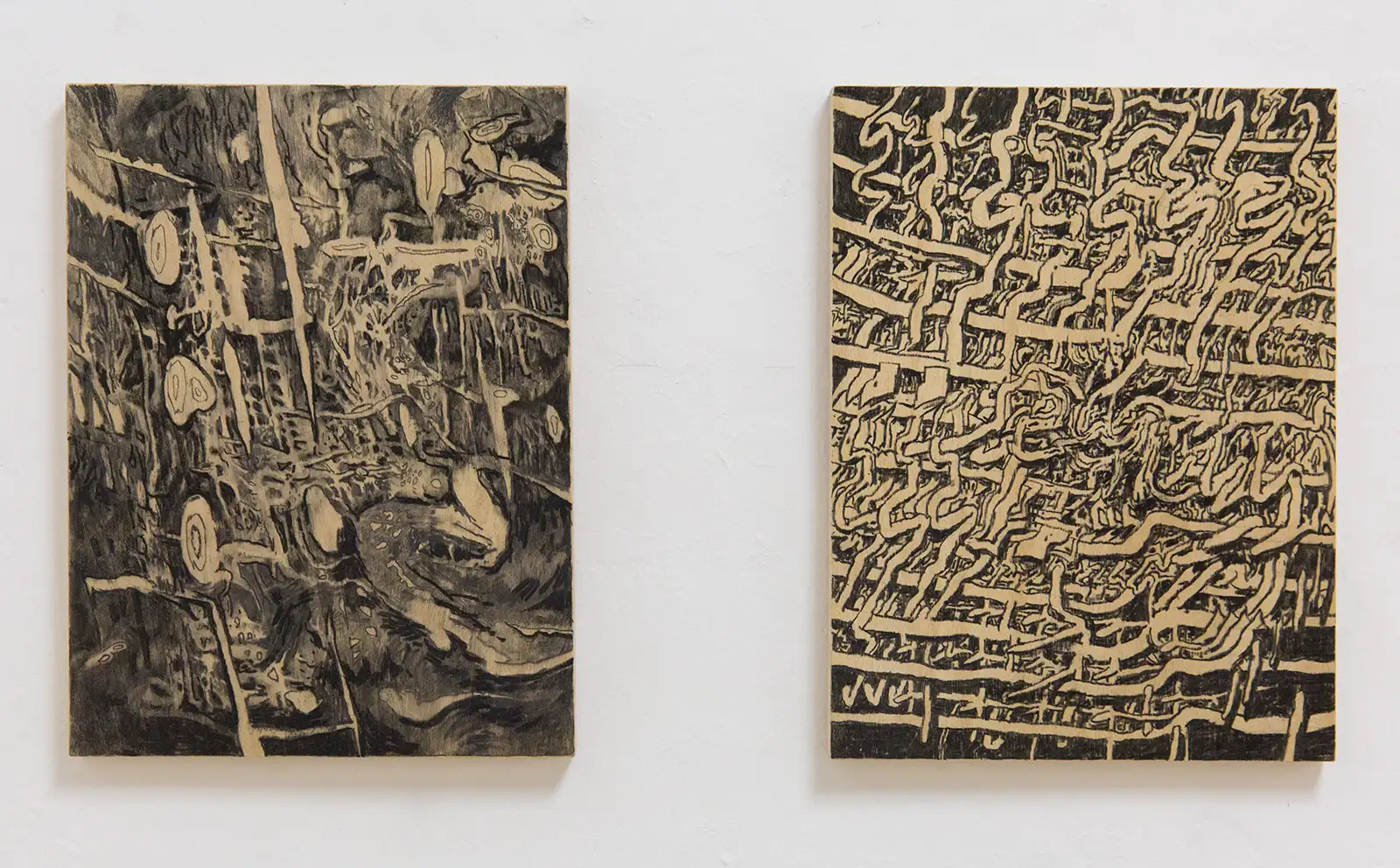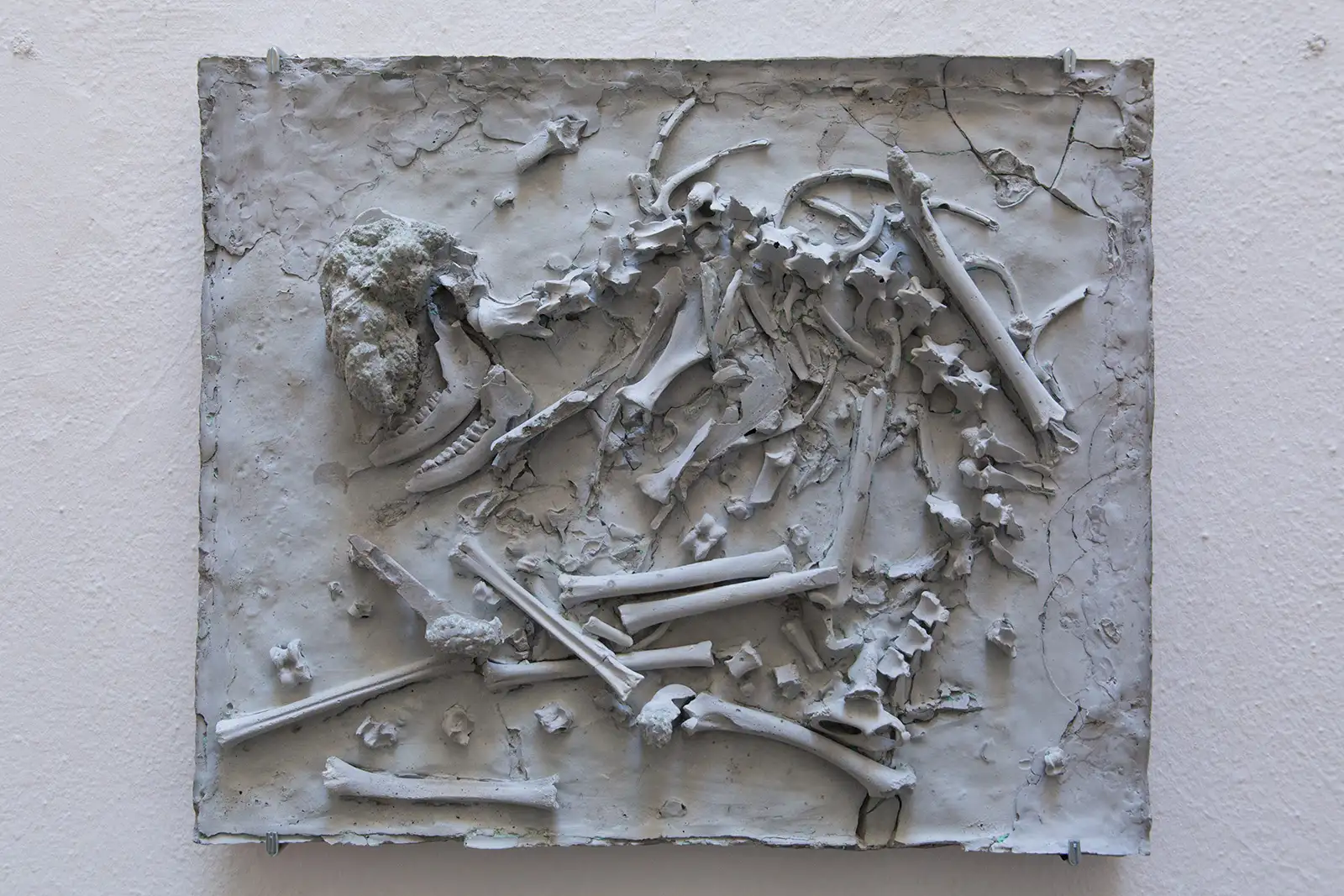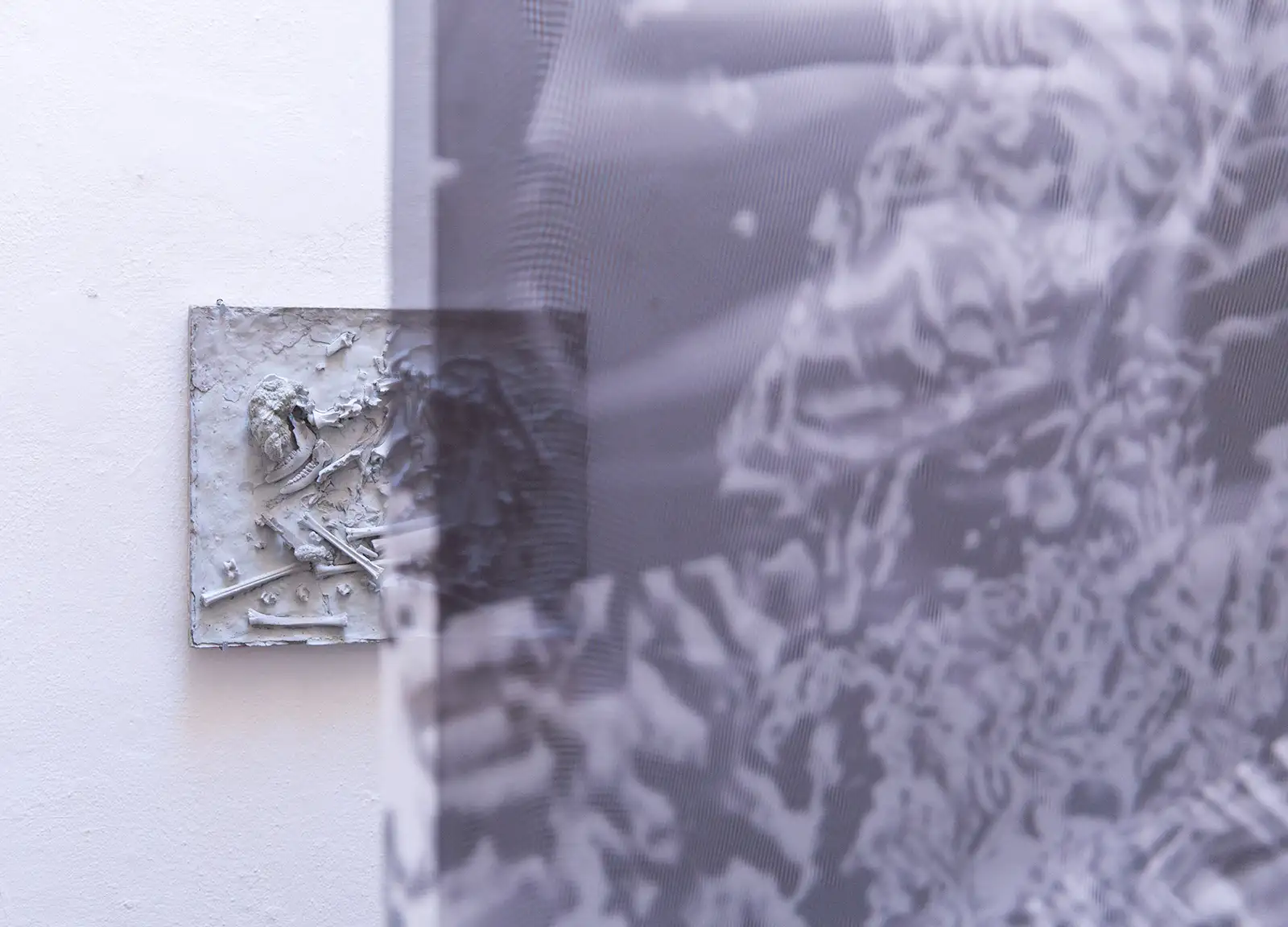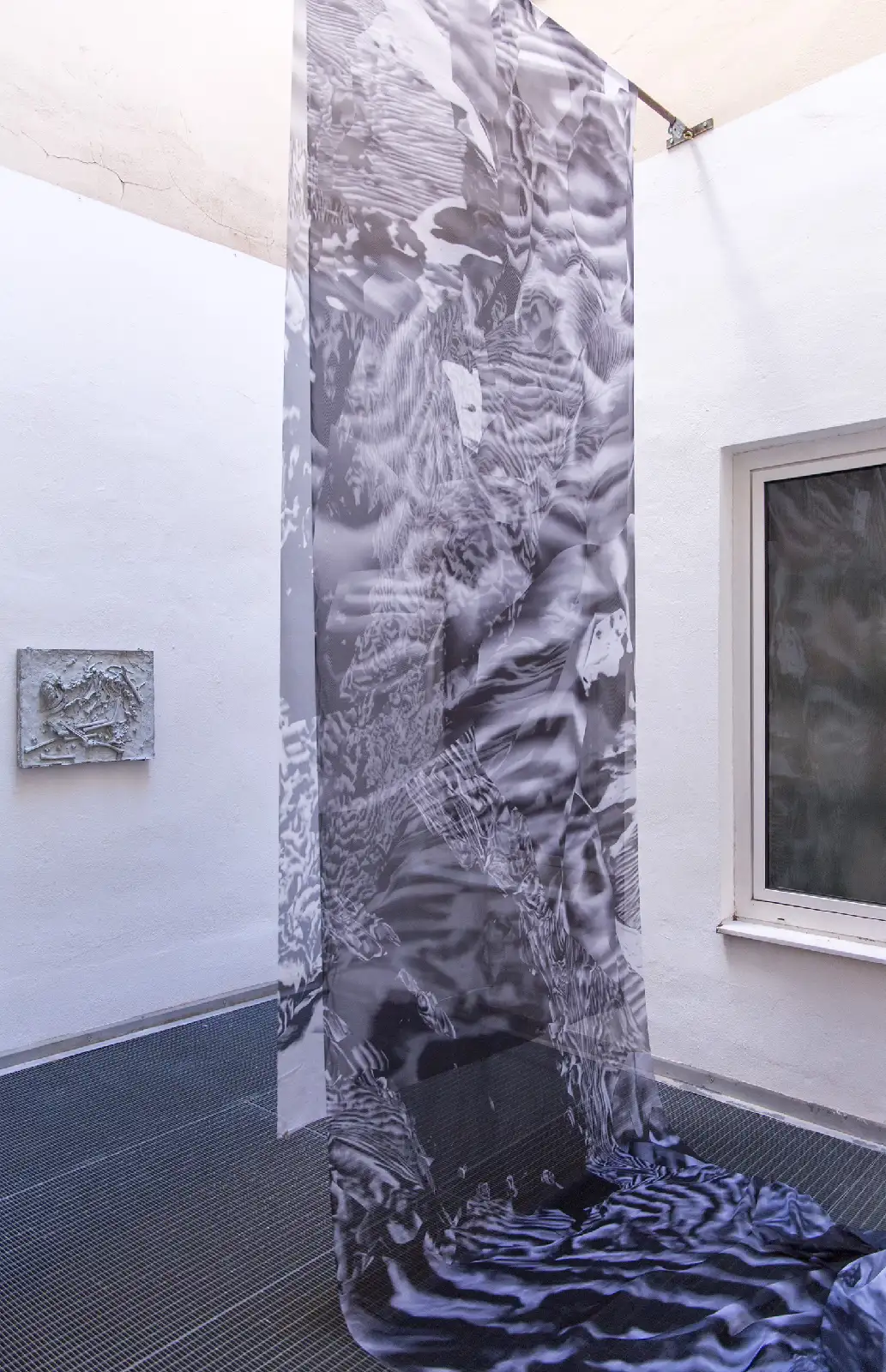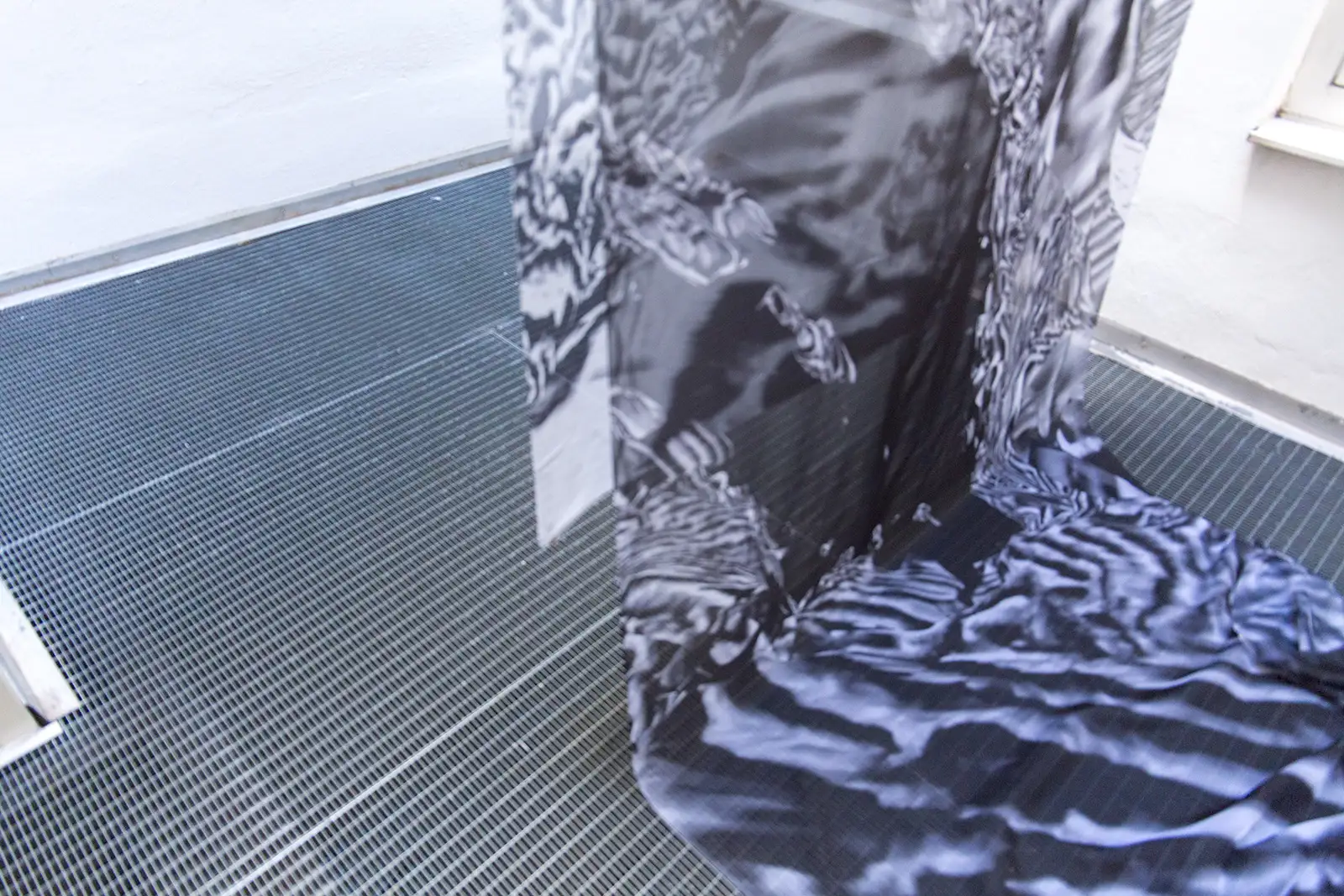About
Iterations, 2019
Exhibition text by
Kathrin Heinrich
Knotty loops and twines. Branches winding in all directions. The limbs of the dwarf beech, an almost mythical tree, form an entangled fabric of squiggles, bends and refractions. It is unsolved why its branches twist and grow back into the ground rather than upwards. Perhaps a mutation, a defect that leads to deformation but at the same time protects the plants from industrial destruction.
With ITERATIONS, Simon Goritschnig presents new works created in Reims and Vienna in 2019. They are attempts at grasping the principles of order of nature in all its layers and mutations. In his graphic, sculptural and site-specific works, the artist proceeds with childlike curiosity as well as with archaeological meticulousness: he explored the ‘Faux de Verzy’, Europe’s largest dwarf beech forest near Reims, like a surveyor, using photography and 3D scans. The large-format drawing Aberration is a result of this research. Goritschnig alienates the organic forms of the forest with digital means and reassembles them before transferring them onto the canvas by hand. His artistic practice of fragmentation and collage takes up the principle of genetic recombination. He allows organic forms to meet digital ones, algorithmic structures to generate moments of irritation: “The eye must leap.”
This interlocking of opposites is the exhibition’s leitmotif: a series of small-format crayon drawings titled Entanglement experiments with the invention of a fictitious nature. One that functions according to its own rules, but nevertheless obeys an order. These are images that construct natural machines, as the artist himself puts it. The narrative structures quickly begin to merge into a whole, one easily begins to recognize stories in them. A narrative potential that Reverse Archaeology also plays with. The relief-like concrete sculpture has the appearance of a fossil. It remains unclear what kind of animal the bones once belonged to, what it died of, and how the ulcerous growths on its skeleton could be explained. Where the artist otherwise tries to depict intrinsic mechanisms of nature, he now reverses his approach.
Thus, a complex network of scientific references and fantastic associations is formed. Layer by layer, Simon Goritschnig uncovers structures – and covers them up again in equal measure. In the Lichthof, Exploration, print 1 covers the rough concrete relief like a veil. The ten-meter-long flag made of finest nylon resembles a membrane in its transparent fragility. Its abstract pattern originates from an excavation of digitally mutated layers as it dissects the found footage of medical computed tomography scans. The resulting moiré effect can, in the context of the exhibition, be read as a reference to the annual rings of a tree. A layering that orders nature from within. A stratification that is the artistic principle underlying the ITERATIONS.
